With sheer cliffs rising more than a thousand metres, narrow waters just 250 metres wide, and waterfalls tumbling from the heights, the Nærøyfjord is Norway at its most dramatic.
Few places capture the drama of the Norwegian landscape quite like the Nærøyfjord. This striking arm of the Sognefjord is not only among Norway’s most visually stunning fjords, it is also surprisingly accessible.
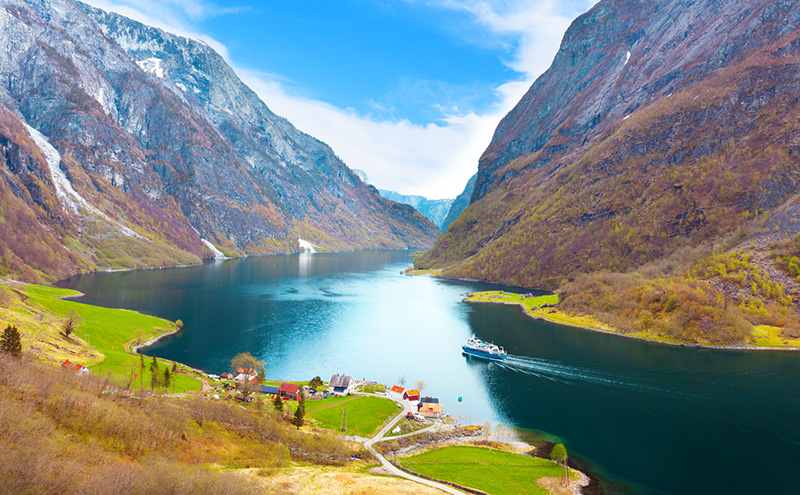
Recognised by UNESCO as part of the West Norwegian Fjords World Heritage Site and a highlight of the famous Norway in a Nutshell route, the Nærøyfjord is a star attraction for anyone exploring fjord Norway.
The fjord’s scale is part of its magic. At its narrowest, the waterway squeezes to just 250 metres across, yet the surrounding mountains soar more than 1,400 metres above sea level.
Sheer cliffs plunge directly into the water, waterfalls tumble from high plateaus, and small farms cling to patches of green where generations of Norwegians have lived with the forces of nature on their doorstep.
Norwegian geologist and writer Amund Helland once remarked: “High and mighty mountains surround these fjords and valleys, which are among the most remarkable areas in Sogn.” Standing on the deck of a boat as it glides through the Nærøyfjord, it is easy to see why he chose those words.
If you are looking to experience one of Norway’s most breathtaking fjords, here is everything you need to know before you go.
Table of Contents
Where is Norway's Nærøyfjord?
The Nærøyfjord is an arm of the Aurlandsfjord, which is itself an arm of the much bigger Sognefjord. Both arms are located in Aurland municipality at the heart of the fjord Norway region.
The river Nærøydalselvi flows down the Nærøydalen valley into the fjord, which stretches from Gudvangen to Mount Beitelen and the Aurlandsfjord.
Just 18km (11 mikes) long, the fjord's depth varies from 10 to 500 meters. It's 100km inland and as with all fjords this far inland, the water is calm. This makes kayaking a great way to experience the area.
In addition to Gudvangen, along the shoreline are the small settlements Bakka, Tufte, Styvi and Dyrdal. The latter two have no road connections and are only inhabited outside the winter time. Although it hasn't happened in a while, the fjord has been known to freeze during especially cold winters.
Sights Along the Nærøyfjord
Together with the Geirangerfjord a little to the north, the Nærøyfjord became an official UNESCO World Heritage site in 2005. Rare for a World Heritage site, the two fjords make the list for both their cultural and natural value.
“The two fjords, among the world’s longest and deepest, are considered as archetypical fjord landscapes and among the most scenically outstanding anywhere. Their exceptional natural beauty is derived from their narrow and steep-sided crystalline rock walls” – UNESCO
Ghosts of the pre-industrial agricultural culture that once dominated Norway linger. It's impossible not to think of the original farmers who settled here and worked incredibly hard to cultivate the landslide-prone land under the mountains.
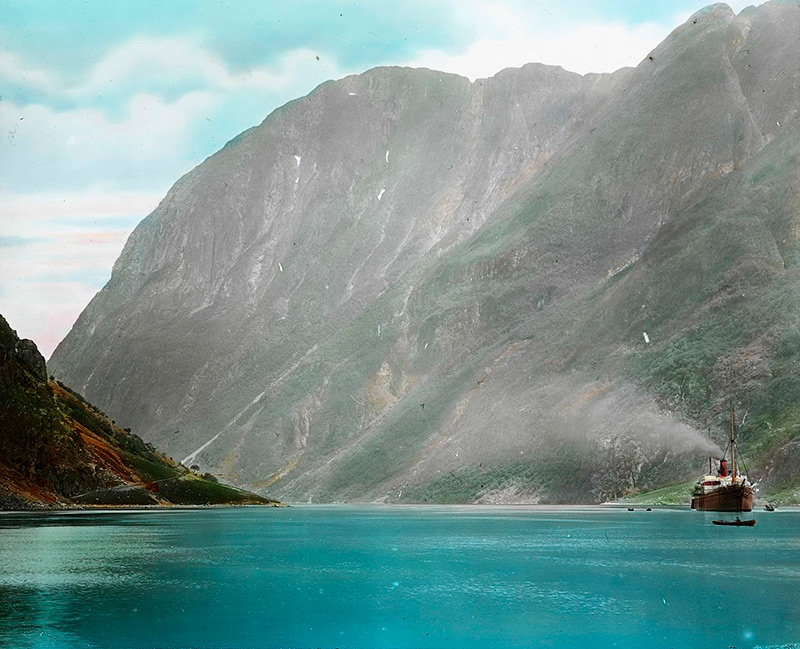
As you can probably guess, the fjord in itself is one big experience. But as for specific sights, there are a few tiny villages and beautiful waterfalls to watch out for. This is also a great location for birdwatching in Norway.
Sagfossen / Lægdafossen: Among the fjord’s many waterfalls, this one stands out as the most spectacular. Known by two names, Sagfossen or Lægdafossen, it tumbles a total of 575 metres, with a single vertical drop of 125 metres.
On calm days, tour boats often edge close enough that passengers can feel the spray on their faces—a refreshing reminder of the raw power of nature.
Tufte and Tuftefossen: The small farm settlement of Tufte is easily recognised thanks to the slender waterfall that plunges down the cliffside behind it.
Once isolated, Tufte is now connected by road to Gudvangen, but it still retains a sense of remoteness when viewed from the water.
Bakka and Bakka Church: Closer to Gudvangen lies Bakka, another tiny village clinging to the fjordside. The gleaming white wooden Bakka Church, visible from almost every angle on the fjord, is the landmark here.
Built in 1859, it is surprisingly spacious for such a remote location, with room for up to 200 worshippers. Today it is still in use and often serves as a cultural venue for concerts and special events.
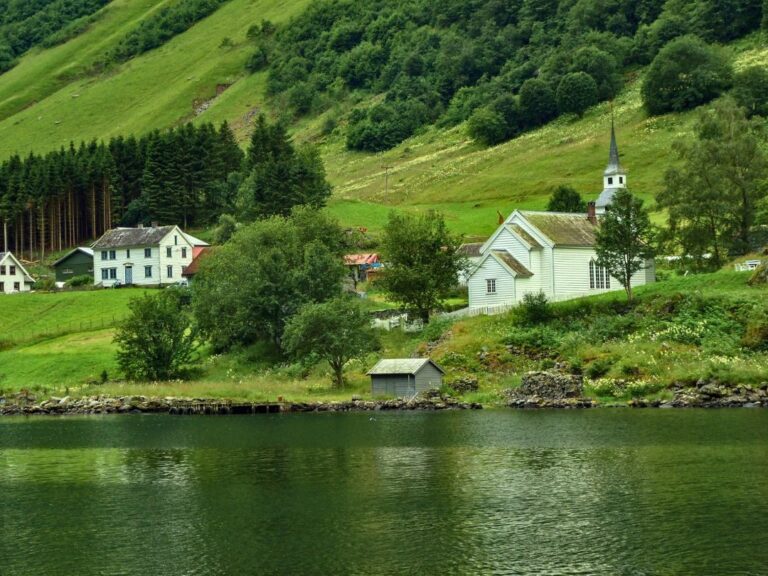
The Nærøyfjord is also a haven for wildlife. White-tailed eagles are regularly spotted soaring overhead, while the fjord’s sheltered waters attract a variety of seabirds. For many visitors, these glimpses of nature add an extra layer of magic to the already unforgettable scenery.
Hiking the Royal Postal Route
One of the most memorable ways to experience the Nærøyfjord is on foot. For a glimpse into how isolated Norway’s rural communities once were, consider hiking part of the old royal postal route, Den kongelige postvegen.
To do so, you’ll need to arrange with the fjord ferry to drop you off at Bleiklindi and, just as importantly, to pick you up at Styvi afterwards. Advance booking is essential, as this is a request stop, not a regular stop.
At Bleiklindi, you’ll find the start of a well-marked 6-kilometre hiking trail that follows a section of the 17th-century postal road.
Once upon a time, this was the main link between Oslo and Bergen, carrying both post and travellers along a challenging but vital route across western Norway. Walking here today, it’s easy to imagine the postmen trudging through in all weathers, their heavy satchels slung across their shoulders.
The path between Bleiklindi and Styvi is relatively gentle, winding through woodland, open pastures, and stretches of old stone walls that hint at the farming heritage of the area. Along the way you’ll be treated to sweeping views of the fjord and the towering cliffs that hem it in.
Styvi itself is one of the fjord’s most historic farmsteads. It is home to a small museum dedicated to the postal road and the lives of those who once lived here. Although the farm is no longer permanently inhabited, the museum preserves a sense of what life was like on the edge of the fjord centuries ago.
The Village of Gudvangen
Tucked away at the very end of the Nærøyfjord, Gudvangen is a place many travellers pass through without pausing. With just a single campsite and a handful of guest facilities, it isn’t designed for long stays.
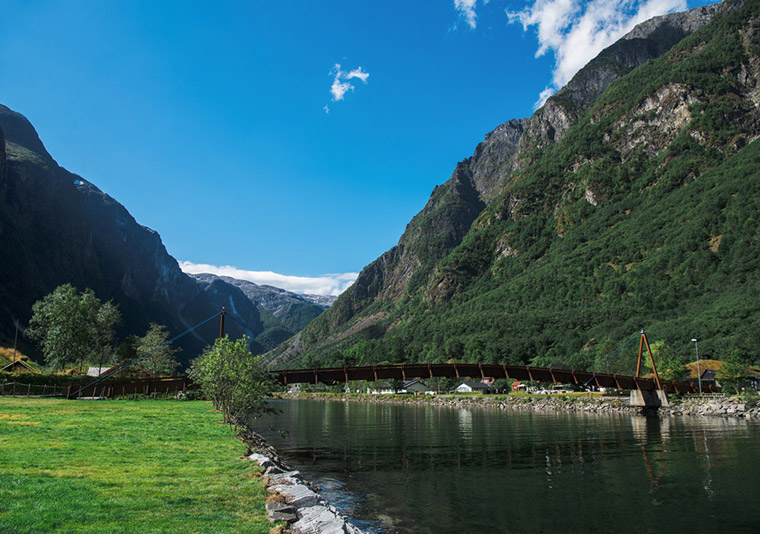
Most visitors hop straight onto a coach or ferry, continuing their journey deeper into fjord Norway. Yet it’s worth lingering, even briefly, to take in the atmosphere of this dramatic valley where steep cliffs rise on all sides and waterfalls tumble down into the fjord.
On my last visit, I noticed that despite the small size of the settlement, there was character in the details: family-run shops selling homemade knitwear, handcrafts, and curiosities, all tucked inside traditional wooden houses. Taking even half an hour to wander here gives a sense of the slower pace of fjordside life.
For road trippers, Gudvangen is also a key waypoint between Sogn and western Norway. Driving from Gudvangen toward Voss and Bergen, the E16 climbs sharply through a lush green valley, twisting up a series of dramatic hairpin bends.
Be sure to stop at Stalheimskleiva, one of Norway’s most famous viewpoints, where you can look back over the valley and fjord for a photograph you won’t forget.
From Gudvangen, allow around two and a half hours for the 147-kilometre (91-mile) drive to Bergen, with Voss providing a natural break along the way.
The Viking Village at Gudvangen
Another highlight is Njardarheimr Viking Village, a recreated settlement that brings the Viking Age to life. Costumed guides, demonstrations of traditional crafts, and interactive activities like archery make it engaging for all ages.
You can enjoy a hearty Viking-style stew or soup at the food court before exploring further.
The village also hosts special events throughout the year, from storytelling evenings to seasonal festivals, so it’s well worth checking the website for opening hours and programs before you travel.
How to Visit the Nærøyfjord
The most popular way to experience Aurland’s highlights is through the classic one-day Norway in a Nutshell train-bus-ferry combination tour from Oslo or Bergen.
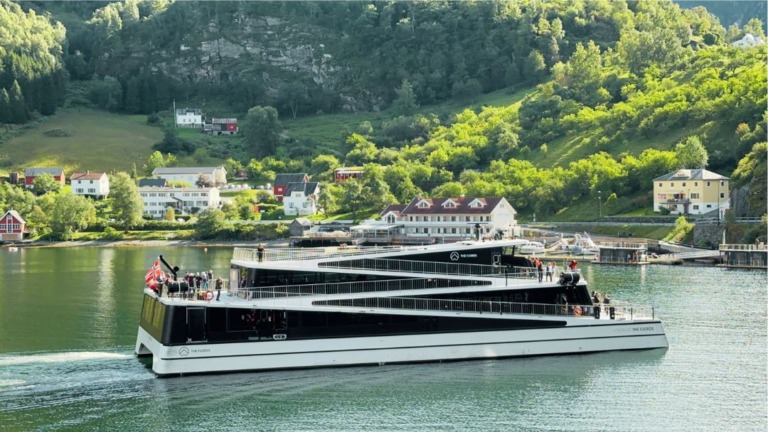
The tour’s popularity is its downside, as from June to August the buses, ferries, and small villages along the route are overrun with people.
My recommendation is to make your own way there, by car or by train. From May to September, a popular sightseeing cruise transports passengers from Flåm to Gudvangen via the Aurlandsfjord and Nærøyfjord.
The futuristic hybrid Vision of the Fjords and all-electric Future of the Fjords eco-ferries ply the route, an early step toward making the fjords entirely electric in the coming years.
The difference it makes to the noise is remarkable, with the screeches of the birds circling overhead much more audible. That's dependent on how noisy your fellow tourists are, of course!
If planning your own itinerary and/or staying overnight in Flåm, taking one of the earlier or later ferries can help to miss the Nutshell rush.
The one-way journey takes just under two hours. To return, choose the ferry again or take the short minute shuttle bus back to Flåm. This cuts the round-trip duration from Flåm down to around three hours.
Other options include a RIB boat “fjord safari” that gives a more intimate experience. I'm not providing specific details here because these things can change frequently and at short notice.
If you're interested in a fjord tour, it's best to contact Flåm tourist information, who can also book all tours.

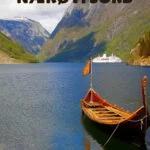

We did the Nærøyfjord trip about 3 summers ago on a boat from Bergen. The weather wasn’t the best (Rain and a bit of low cloud) but it was the best part of our 5 days in Bergen. The weather made it look even more dramatic than it already is. I would recommend visiting this Fjord to anyone.